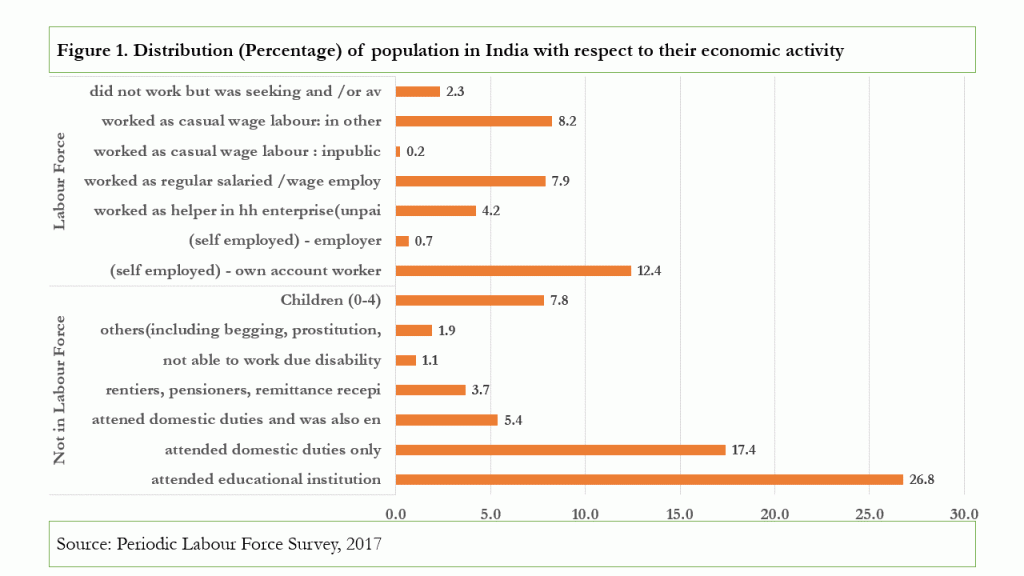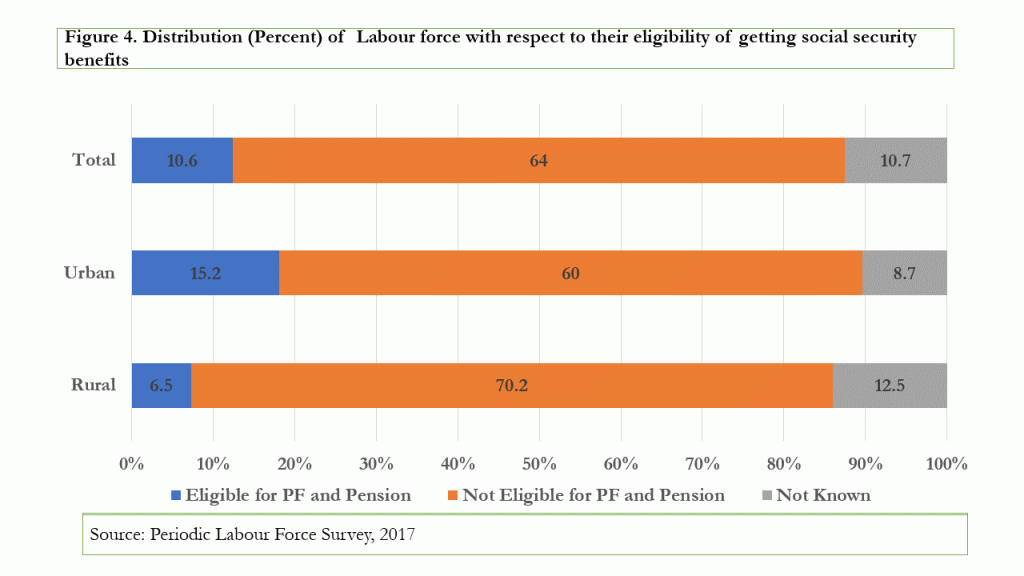Covid19’s spread has become a major threat not only to life but also to livelihood. The Government of India and the State Governments have undertaken several measures to check Covid’s spread since the first confirmed case on 30th January 2020. One crucial and significant decision taken by the Government of India, was of a 21 days country-wide lockdown haulting all socio-economic activities w.e.f. 25th March. However, the rise in Covid19 cases forced the Government to extend it till 03rd May in the second phase and the third phase would continue until 17th May.
The long-drawn lockdown is a cause of great concern for a developing country like ours. Over 21 percent of the population lives Below Poverty Line (BPL) and most are daily wage earners living hand to mouth. In rural areas, the situation is worse as employment opportunities available are limited. The lockdown stalemate prevents these people from earning, making them unemployed. This could generate negative externalities affecting the smooth functioning of economy in the long run and pose a threat to the gross national well-being.
The dependency rate in India is very high which essentially means an employed person provides livelihood support for many other people, either in the family or outside of the family. The Periodic Labour Force Survey (PLFS) conducted by National Statistical Organisation (NSSO) in 2017-18, shows that about 36 percent of population in the county is in labour force (Figure 1).

This 36 percent of population, is either engaged or available to get engaged in various economic activities. The rest 64 percent of population does not participate in any economic activities and therefore, depends on this 36 percent population for sustenance. The dependent population includes children below the age of four (7.8 percent,), students (26.8 percent) and those engaged in various domestic activities, retired and those unable to earn (23 percent).
For any reason, even if a small fraction of the earning population fall out of the earning bracket, it threatens their own survival and of their dependents. Hence, any kind of economic shock endangers many lives. The survey further states that those in labour force are not paid enough to comfortably support themselves and their dependents.
And also not all those in labour force get employment opportunities. The PLFS 2017-18 shows that the rate of unemployment in the country stands at 6.5 percent in 2017-18. In the rural areas, the unemployment rate stands at 5.8 percent and in the urban areas at 8.1 percent, according to the labour’s usual principal activity status (Figure 2).

The activity on which a person spent relatively long time (major time criterion) during 365 days preceding the date of the survey is considered to be the usual principal activity status of the person. The unemployment rate is defined as total number of people who seek but do not avail any work as a percent of total labour force.
Excluding the unemployed labour force of 6.5 percent, the rest 93.5 percent which is about 33 percent of India’s population are employed in various economic activities. Importantly, a large share of these economic activities are non-formal in nature. They do not ensure regular wages/salaries. These activities are mostly agriculture, fishing, plantation, slaughtering, domestic help, daily wage workers etc. The share of labour force employed in these activities is as large as 78 percent in India – 87 percent in rural and 56 percent in urban.
The perennial economic structure of the country with respect to employment has not changed. Enterprenuers, especially small businesses and sole propeitor, have small risk appetite, because of the market and natural uncertainties, and with no social security or insurance to provide any cushion.
Also, unhealthy market competition and profit maximization does not ensure regular salaries to the employees. Hiring and firing happens as per benefit to the employer.

The PLFS 2017-18 shows that about 82 percent of labour force engaged in various economic activities do not have a job contract. This major share of labour force will be the first to become jobless in any kind of economic uncertainty, like the current lockdown. Further, the 3 percent labour force with a job contract for a year or less could also face this challenge if the contract is over just before, within or just after the lockdown is over.
Economic uncertainties because of lockdown affect a large share of population because of employment structure in the country. There are less social securities to ride over even short run economic crisis. Social security system in India is yet a non-starter.

About 10.6 percent of labour force employed in various economic activities is eligible for social securities like provident fund, pension, insurance and others. This share stands a little higher for urban labour force which is 15 percent. But, in rural areas only 6.5 percent of total labour force are eligible for social security benefits. And since India is largely a rural country with 70 percent of population living in villages, mostly the rural labour force remains out of social security benefits, making them most vulnerable to economic uncertainities.
Growing uncertainties and less lucrative jobs in the rural sector leads to urban migration for better earning opportunities. The rural sector provides food and nutrition to the entire country and adequate food stock is available to face any economic uncertainties. However, the misery of this very labour force remains unaddressed.
The labour force in the country is not financially secure, and hence the wave of reverse migration during the lockdown. They are the defence players to face the challenge of uncertainties like lockdown, flood and drought and at the same time forward players to win the goals and clinch the victory. The country could successfully face any kind of adversity and uncertainty if the interest of our nation-builders are protected.
Sridhar Kundu : Sr. Research Analyst, Bharti Institute of Public Policy
Email: bipp@isb.edu; sridhar_kundu@isb.edu
DISCLAIMER : Any comments, speeches, articles, blogs, podcasts, videos/vlogs, opposite the editorial page/opinions andeditorials page (OP-ED), interview response etc. made by individuals should be accompanied by a clear disclaimer from the ones given below.
“The views expressed in this article are personal. Sridhar Kundu is Sr. Research Analyst at the Indian School of
Business.”

